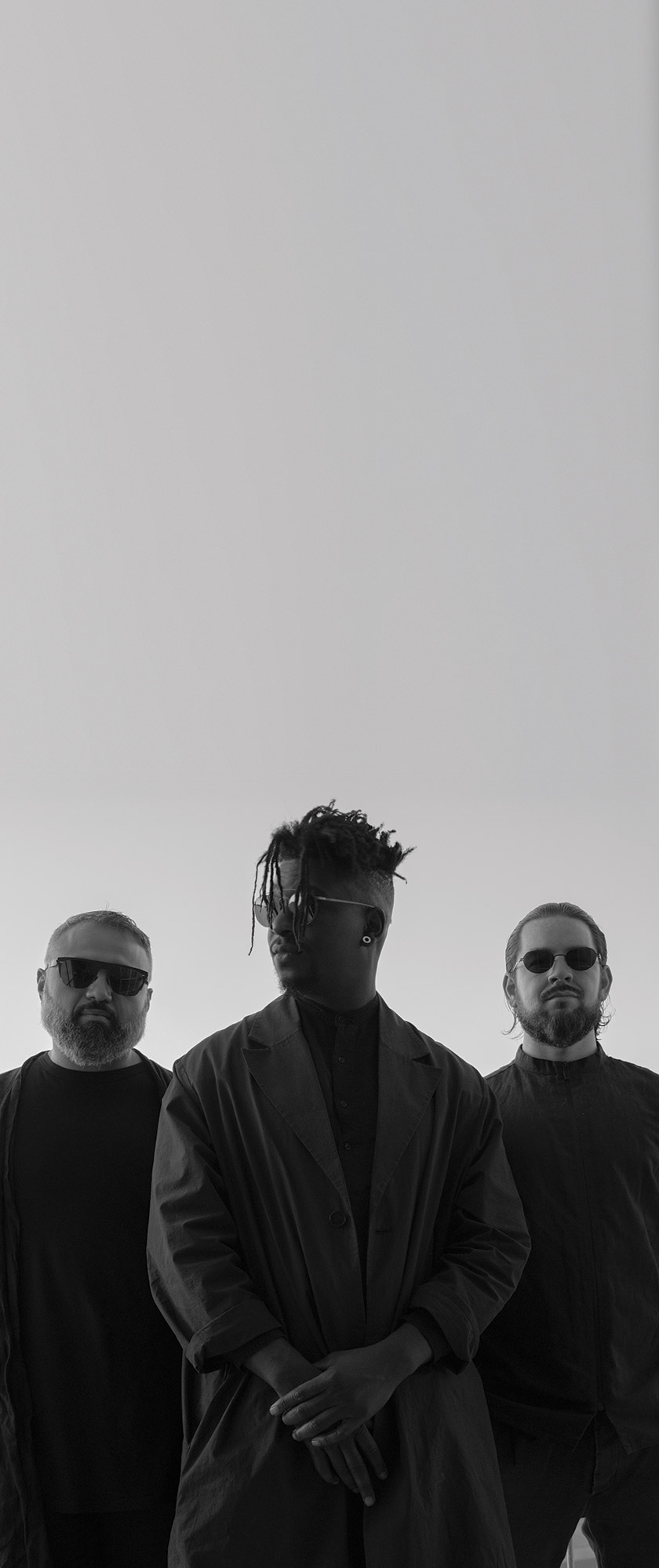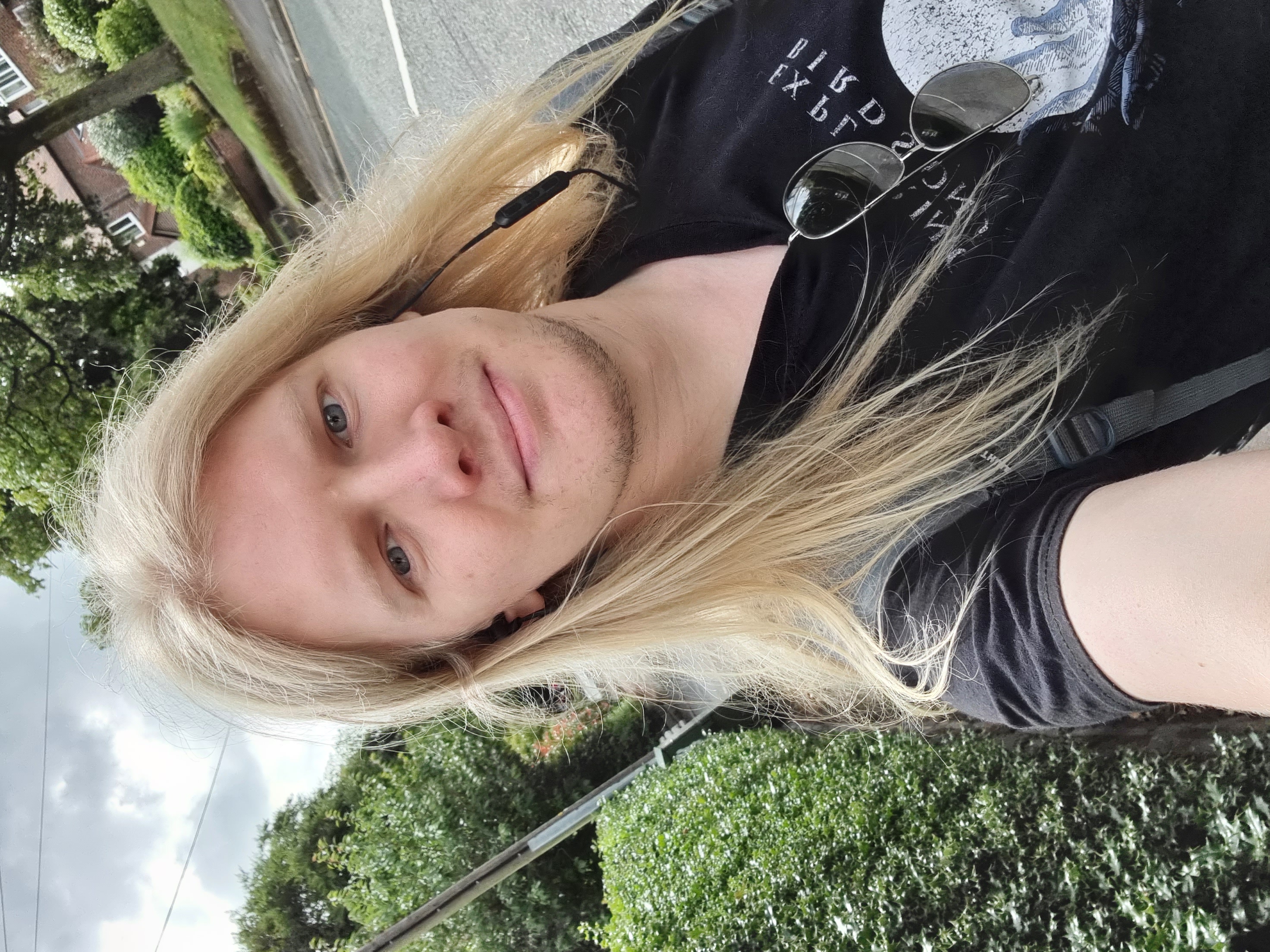Animals As Leaders and the story of Parrhesia
"We do fit relatively neatly into the progressive metal genre," agrees guitarist Tosin Abasi as we discuss Animals As Leaders' latest album Parrhesia

Time, for Animals As Leaders, has always been a concept to be toyed with. The trio’s obsession with unusual rhythms, rudiments and subdivisions is what drives them. But until now, time has never been a concept the Washington-based band has taken at face value.
“This album is the one we’ve worked on the most,” says guitarist Javier Reyes of Parrhesia, the band’s fifth studio record. “It was nice to write with no real pressure or time constraints.”
Parrhesia, an Ancient Greek word that translates as ‘free speech’, is a liberating album of expressive aggression and intricacy. It’s their heaviest by a country mile, but it’s much more than just grunt and grit. It’s the sound of introspection and patience duly rewarded.
“It’s been nice to have the luxury of not being forced to create music because it allows for evolution,” co-guitarist Tosin Abasi adds. “A lot of the musical choices we’ve made are a result of that space and the ability to just listen and question what we want to happen with the songs. It allowed us to bring a fresh perspective to the album.”

Since their self-titled debut in 2009, the instrumental trio (two eight-string guitarists – Reyes and Abasi – and drummer Matt Garstka, whom Abasi describes as “a library of rhythms”) have carved out quite a name for themselves in both progressive and metal circles. Much of their early following was made up of fellow musicians, amazed by their proficiency. But their sound has developed and their appeal has broadened as they’ve learnt to better navigate their ideas to blend the complex with the contagious. As such, they’ve often been labelled a djent band. For Abasi, though, that doesn’t tell the whole story.
“It’s funny,” he smiles. “I remember when djent was kind of a joke and not a legitimate thing at all. I think we do fit relatively neatly into the progressive metal/djent genre, but we want to do much more than that and I think a lot of what Animals As Leaders want to do is to defy categorisation.”
Their 2011 release, Weightless, leaned heavier into their fusion side, but it wasn’t until The Joy Of Motion arrived three years later that their sonic concept felt fully formed. The Madness Of Many (2016) built on that, with what Reyes describes as a “fusion-y, up and down album”. Nylon-stringed guitars and quieter, more pensive moments provided much of its backbone, with their jazz and classical influences dialled up, while their metal influences were scaled back. But after an intense decade of writing, recording, touring and repeating the cycle, it was time for the trio to take a breath and take stock.
Sign up below to get the latest from Prog, plus exclusive special offers, direct to your inbox!
“We took our time to minimise us repeating ourselves,” Reyes reveals. “This new material definitely sounds like Animals As Leaders, but we wanted there to be something new about the sound. We’d meet up and write together for two or three weeks, and then maybe four months later do the same thing.”
“It’s that sharpening of the knife thing,” Abasi adds. “We took the scope of elements we normally throw into [our] music and consolidated them to make a pretty direct album.”
“We were allowing each song to really say something and for us to be confident in the material,” Reyes expands. “There was no pressuring ourselves. We wanted to feel naturally inspired. Inspiration and creativity isn’t a faucet; you don’t just turn it on and off.”
But not all songs went through such a patient process.
“Monomyth came out of nowhere,” says Abasi. “It was originally a drum composition Matt had written of permutations and concepts. So we wrote the guitars after hearing the drums and it sort of wrote itself. There are a lot of heavy, complex, syncopated rhythms in that and I think it came out as a particularly strong song.”

Another change in their creative process was the mixing. Reyes co-mixed the album with engineer Nick Morzov and his involvement opened up a world of new possibilities: “Being in the band allows me to mix creatively in a way that a third party wouldn’t be able to do. They wouldn’t be able to add a whole new synth layer or a whole new transition or cut out little parts here and there. But I’m allowed to do that.
“I think we mixed a good portion of the album a handful of times. It was just like, ‘Okay this is cool’, and then we’d hear somebody else’s mix and be like, ‘Goddammit, that’s way cooler’ and we’d try to figure out our process all over again and try to elevate the mix.”
Through the very nature of their music, Reyes and Abasi are rightfully labelled virtuosos. In 2017, Steve Vai told MusicRadar, “When I think of guys that are creating things of great value right now, I think of Tosin.” Two years later Guitar World ranked Abasi the second-best guitarist of the decade. So, does that put the weight of expectation on their shoulders to impress every time it comes to creating new music?
“I think the nature of the band is to show off a bit, right?” says Reyes. “But it got to that point because of a natural tendency to want to play complicated stuff. Through our writing, for both Tosin and myself individually, we don’t necessarily feel the need to write complicated stuff. It’s more that what we hear in our heads is apparently really complicated and very difficult to play. That hasn’t really changed. But that’s now coupled with having a career with the band and that our goal is to outdo ourselves from one album to the next. So we feel we have we have to show off and do cool new things as well.”
“I think there’s pressure for me as a lead guitarist because you want to live up to like the hyperbole,” Abasi returns. His lead playing is more elegant than ever on Parrhesia. “But I agree with Javier. Everything I write does have an element of complexity to it just because that’s the type of music I digest and it’s how I express myself. I like rhythmic and harmonic complexity.”
But what shines through the most on Parrhesia isn’t so much the virtuosity at play as it is how they utilise it.
“It’s about having the elements of catchy and complex at the same time,” Abasi believes. “When I’m writing at my best you can sing the riff, but it’s stimulating and complex enough that there’s more there for you than just something that’s instantly singable.
“I know when Javier writes a lot he’ll actually be singing the melody. I think part of our brains are ideally wanting to centre on a musical phrase that is catchy but you still feel like there’s a percentage of complexity that’s gonna take you a few listens to understand.”
Says Reyes, “Any time there’s any complexity happening in a song and we need to come up with a melody, I look for how to counter and complement what’s happening rhythmically. Something that’s easy to listen to and identifiable but still leaves room to appreciate the rest of the music. When I sing stuff out, the melodies I write feel more natural. I think that’s important.”
As time moves forwards, so do Animals As Leaders. While the band are happy to talk up their “heaviest record yet”, that line is disparaging of its finer details. The record has balls, but it also has brains. It’s just as astute as it is aggressive and, ultimately, it represents everything that has earned the band such esteem in the most convincing way yet.
This article originally appeared in issue 128 of Prog Magazine.
You can usually find this Prog scribe writing about the heavier side of the genre, chatting to bands for features and news pieces or introducing you to exciting new bands that deserve your attention. Elsewhere, Phil can be found on stage with progressive metallers Prognosis or behind a camera teaching filmmaking skills to young people.

